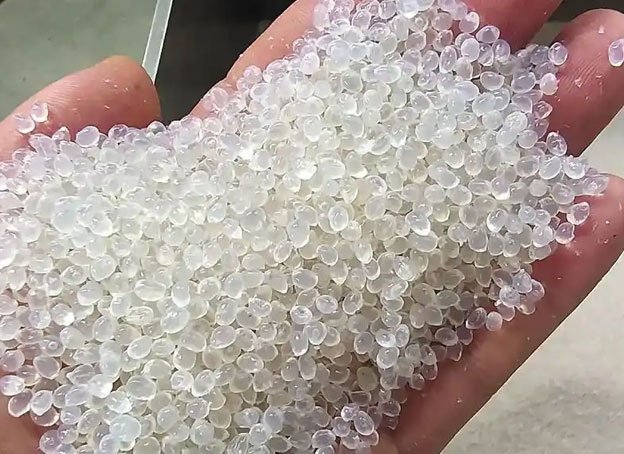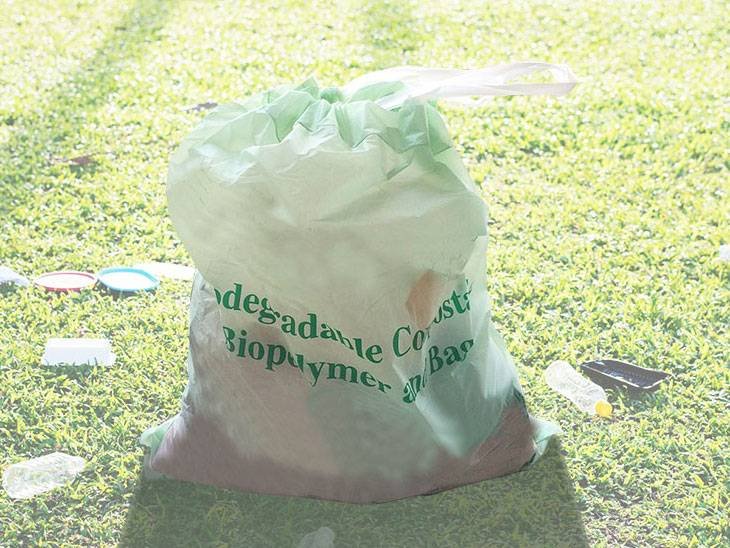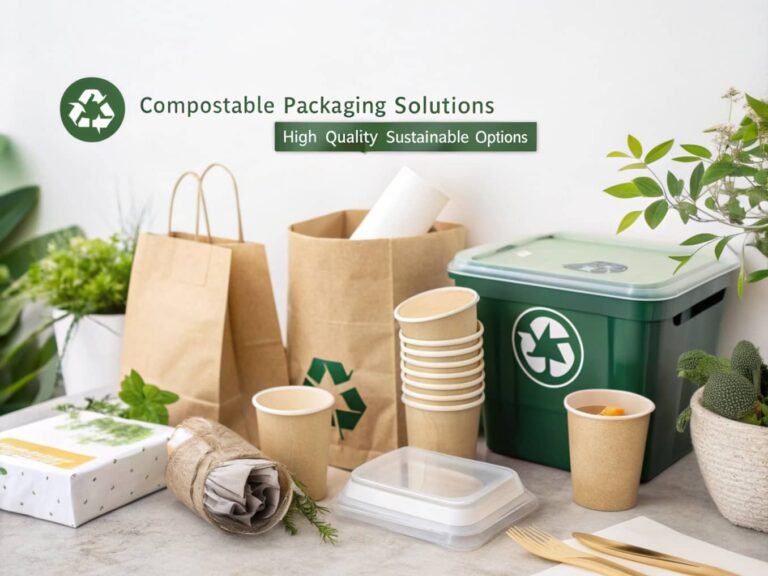With estimates suggesting over 4 million tons of plastic ends up in oceans and landfills annually, demand for biodegradable plastics and sustainable materials is soaring, and PLA, a biopolymer, is transforming the world of eco-friendly plastics.
As operators of OrizonBio.com, a leading compostable bag manufacturer with 16 years of experience, we've witnessed firsthand how PLA has transformed the industry. In this article, we'll explore what PLA is, how it's produced, and its environmental impact. Whether you're a B2B buyer, an Amazon seller, or a sourcing specialist looking for biodegradable bags, this guide will help you understand the potential of PLA for sustainable packaging.

What is PLA?
Polylactic acid (PLA) is a thermoplastic polymer synthesized from plant-based raw materials. It is a renewable resource and biodegradable, offering a promising alternative to traditional petroleum-based plastics.
- Name: PLA polylactic acid, PLA
- Compound parameter details:
- CAS: 26100-51-6
- Molecular weight (PEG): 2000, 3400, 5000, other molecular weights can be customized or not provided.
- Molecular weight (PLA): Customized between 1000-60000, other molecular weights can be customized or not provided.
- Solubility: Soluble in conventional aqueous solutions and most organic solvents
- Stability: 12 months under low temperature drying conditions below 4°C.
Chemical Composition
PLA is composed of lactic acid monomers linked together in polymer chains. This structure imparts properties similar to traditional plastics, such as transparency, rigidity, and biocompatibility, while also being renewable.
History and Development
PLA was invented in the 1930s and gained commercial development in the late 20th century amid growing environmental concerns. Today, PLA has become a key player in the transition to renewable plastics, with technological advancements making it more readily adaptable for everyday use.

How PLA is produced
PLA production starts with nature and ends in high-tech facilities, embodying the essence of bio-based manufacturing.
Raw Materials
PLA is derived from renewable raw materials such as corn starch, sugarcane, or cassava, avoiding the use of fossil fuels. At Orizon Bio, we prioritize sustainable sourcing to ensure our compostable bags meet global ecological standards.
Manufacturing Process
Lactic acid is fermented from plant sugars, then polymerized and extruded into a usable form. The synthesis of this bio-based polymer is more energy-efficient than traditional plastic production.
Sustainable Production
PLA manufacturing uses relatively little non-renewable energy, but ongoing improvements focus on reducing water consumption and emissions. With a 20,000 square meter facility and 16 production lines, Orizon Bio continuously optimizes these processes to provide high-volume, customizable PLA products, such as compostable trash and pet waste bags.
Environmental Impact of PLA:
Life Cycle Assessment (LCA)
A comprehensive life cycle analysis shows that PLA has a 50-70% lower carbon footprint than petroleum-based plastics, covering its entire cradle-to-grave lifecycle. This includes reduced greenhouse gas emissions during production and end-of-life decomposition.
Biodegradability vs. Compostability
PLA is compostable under industrial conditions (heat and microorganisms), breaking down into water, carbon dioxide, and biomass. It is not always fully biodegradable in the natural environment.
Pros and Cons
PLA's advantages include minimizing dependence on fossil fuels and a lower environmental footprint, while challenges include potential cropland use and the need for adequate disposal infrastructure. For companies sourcing from China, Orizon Bio's compostable products help alleviate these challenges by ensuring certified sustainability.

Applications of PLA
Traditional Uses
- PLA filaments are favored in 3D printing for their easy processing and low odor.
- In the packaging sector, PLA can be used to make food containers and disposable tableware.
- Medical devices benefit from PLA-based bioresorbable implants.
- Orizon Bio specializes in the production of compostable trash bags, pet waste bags, mailing bags, garment bags, and produce bags.
Innovative and Emerging Applications
PLA is expanding into the textile sector, where it is used to produce eco-friendly fabrics, agricultural mulch, electronics, biodegradable parts, and even automotive components.
Comparison of PLA with Other Materials
Comparison of PLA with Petroleum-Based Plastics
PLA offers superior environmental performance compared to PET, ABS, or PVC, but may be less heat-resistant. PLA is more biodegradable, but recycling methods vary.
Performance
PLA offers good mechanical strength and flexibility, and its durability can be enhanced through modification.
Modification and Enhancement
Blending PLA with additives can improve limitations such as heat resistance, making it suitable for demanding applications like our compostable courier bags.

How to Dispose of and Recycle PLA:
Composting Guide
Industrial composting is ideal for PLA, while home composting is more limited. Look for certifications such as ASTM D6400.
Recycling Challenges and Solutions
PLA challenges traditional recycling processes, but emerging chemical recycling methods are converting it into lactic acid, supporting a circular economy for bioplastics.
Policies and Infrastructure
Global regulations, such as plastic bans, are driving the adoption of PLA. Orizon Bio helps customers address these challenges by providing compliant, exportable compostable packaging.
How to Choose PLA Products
Identifying PLA Products
Check the label for "compostable" or certification. We offer customizable compostable pet waste bags and vegetable bags.
Usage and Care
Handle PLA products with care—avoid extreme heat—and store them properly. They are food-safe and durable for everyday use.
Consumer Benefits
Switching to PLA supports sustainable living, reduces waste, and enhances your brand's appeal in environmentally friendly product guidelines.

Future Prospects of PLA
Current Market Situation
Driven by demand for packaging and textiles, the PLA market is growing at a compound annual growth rate of 15%. Key players include manufacturers such as Orizon Bio, which serve global customers.
Cost
PLA costs more than traditional plastics, but mass customization in China can reduce costs—contact us for more competitive pricing.
Future Trends
Advances in production and regulatory support will reduce costs and expand its global application.
Conclusion
Polylactic acid (PLA) represents a key step toward biodegradable plastics and sustainable materials, offering environmental advantages, a wide range of applications, and promising market growth. Ready to source environmentally friendly products from China? Visit OrizonBio.com or contact us for a custom quote and samples.
le in future sustainable development. Let us look forward to the green future brought by PLA!
FAQ
Is PLA safe for food packaging?
Yes. PLA is widely used in food containers, cups, and compostable utensils. It is food-contact safe.
Can I compost PLA at home?
Not usually. PLA requires industrial composting conditions. Most backyard compost bins are not hot enough.
Is PLA recyclable?
Technically yes, but most recycling systems do not accept PLA due to contamination risks. It must be collected and processed separately.
Is PLA microwave or dishwasher safe?
No. PLA softens at low heat and can warp in microwaves or dishwashers.
Where is PLA commonly used in business?
Eco-packaging, foodservice containers, 3D printing, and medical devices are the top industries using PLA today.
Last updated: August 18, 2025 at 13:57 pm




